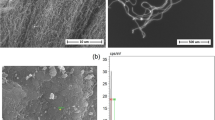Abstract
The laboratory tests on the post-liquefaction deformation of saturated sand-gravel composites were performed to investigate the characteristics of stress-strain relation and the dissipation of pore water pressure by the hollow cylinder apparatus. It is found that the stress-strain response and the dissipation process of pore water pressure are composed of three stages, including the low intensive strength stage, the superlinear strength recovery stage and the sublinear strength recovery stage, and the demarcation points of the curve of pore water pressure are lag behind those of the stress-strain response. The comparison results of the behaviour of large post-liquefaction deformation between saturated sand-gravel composites and Nanjing fine sand show that the low intensive strength stage and the superlinear strength recovery stage of saturated sand-gravel composites are shorter while the sublinear strength recovery stage is longer. A stress-strain model and a dissipation model of excess pore water pressure of liquefied sand-gravel composites are established, in which the initial confining pressure and the relative density can be considered synthetically. And it is found that the predicted results by the two models are in good agreement with experimental data.
Similar content being viewed by others
References
HAMADA M, TOWHATA I, YASUDA S, ISOYAMA R. Study on permanent ground displacements induced by seismic liquefaction [J]. Computers and Geotechnics, 1987, 4(4): 197–220.
TOHNO I, SHAMOTO Y. Liquefaction damage to the ground during the 1983 Nihonkai-Chubu Earthquake in Akita prefecture [J]. Natural Disaster Science, 1985, 7(2): 67–93.
TOHNO I, SHAMOTO Y. Liquefaction damage to the ground during the 1983 Nihonkai-Chubu Earthquake in Aomori prefecture [J]. Natural Disaster Science, 1986, 8(1): 85–116.
HAMADA M, ISOYAMA R, WAKAMATSU K. Liquefactioninduced ground displacement and its related damage to lifeline facilities [J]. Soils and Foundations, 1996, (Special Issue): 81–97.
SHAMOTO Y, ZHANG Jian-min, GOTO S. Mechanisms of large post-liquefaction deformation in saturated sand [J]. Soils and Foundations, 1997, 37(2): 71–80.
HAMADA M, YASUDA S, ISOYAMA R. Observation of permanent displacements induced by soil liquefaction [J]. Proceedings of Japan Society of Civil Engineers, 1986, 3(6): 211–220.
TOKIMATSU K, SEED H B. Evaluation of settlements in sands due to earthquake shaking [J]. Journal of the Geotechnical Engineering Division, ASCE, 1987, 113(8): 861–878.
ISHIHARA K, YOSHIMINE M. Evaluation of settlements in sand deposits following liquefaction during earthquakes [J]. Soils and Foundations, 1992, 32(1): 173–188.
TOWHATA I, SASAKI Y, TOKIDA K, MATSUOKA H, TAMARI Y, YAMADA K. Prediction of permanent displacement of liquefied ground by means of minimum energy principle [J]. Soils and Foundations, 1992, 32(3): 97–116.
BARTLETT S F, YOUD T L. Empirical prediction of liquefaction induced later spread [J]. Journal of Geotechnical and Geoenvironmental Engineering, ASCE, 1995, 121(4): 316–329.
YASUDA S, YOSHIDA N, MASUDA T. Stress-strain relationship of liquefaction sands [C]// Earthquake Geotechnical Engineering. Rotterdam: Balkema, 1995: 811–816.
LIU Han-long, ZHOU Yun-dong, GAO Yu-feng. Study on the behaviour of large ground displacement of sand due to seismic liquefaction [J]. Chinese Journal of Geotechnical Engineering, 2002, 24(2): 142–146. (in Chinese)
ZHANG Jian-min, WANG Gang. A constitutive model for evaluating small to large cyclic strains of saturated sand during liquefaction process [J]. Chinese Journal of Geotechnical Engineering, 2004, 26(4): 546–552.
WANG Yan-li, WANG Yong. Experimental study on strength and deformation characteristics of saturated sand after liquefaction [J]. Journal of Hydralic Engineering, 2009, 39(6): 667–672. (in Chinese)
XU Bing, KONG Xian-jing, ZOU De-gao, et al. Laboratory study on behaviour of static properties of saturated sand-gravel after liquefaction [J]. Chinese Journal of Geotechnical Engineering, 2007, 29(1): 103–106. (in Chinese)
ZOU De-gao, XU Bing, KONG Xian-jing. Study on the stress-strain relation of liquefied saturated sand-gravel composites and method of parameter identification [J]. China Civil Engineering Journal, 2009, 42(5): 117–124. (in Chinese)
Author information
Authors and Affiliations
Corresponding author
Additional information
Foundation item: Project(90715018) supported by the National Natural Science Foundation of China; Project(200808022) supported by the Special Fund for the Commonweal Industry of China; Project(08KJA560001) supported by the Key Basic Research Program of Natural Science of University in Jiangsu Province; Project(CX10B_170Z) supported by the Postgraduate Scientific Innovation Program in Jiangsu Province, China
Rights and permissions
About this article
Cite this article
Pan, H., Chen, Gx., Sun, T. et al. Behaviour of large post-liquefaction deformation in saturated sand-gravel composites. J. Cent. South Univ. Technol. 19, 547–552 (2012). https://doi.org/10.1007/s11771-012-1038-x
Received:
Accepted:
Published:
Issue Date:
DOI: https://doi.org/10.1007/s11771-012-1038-x




